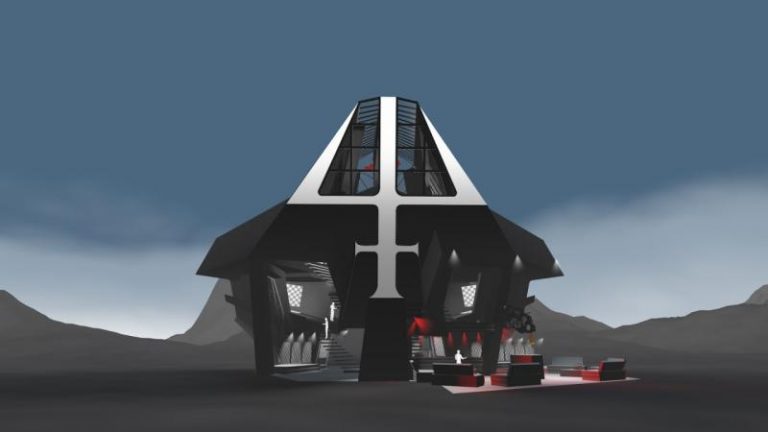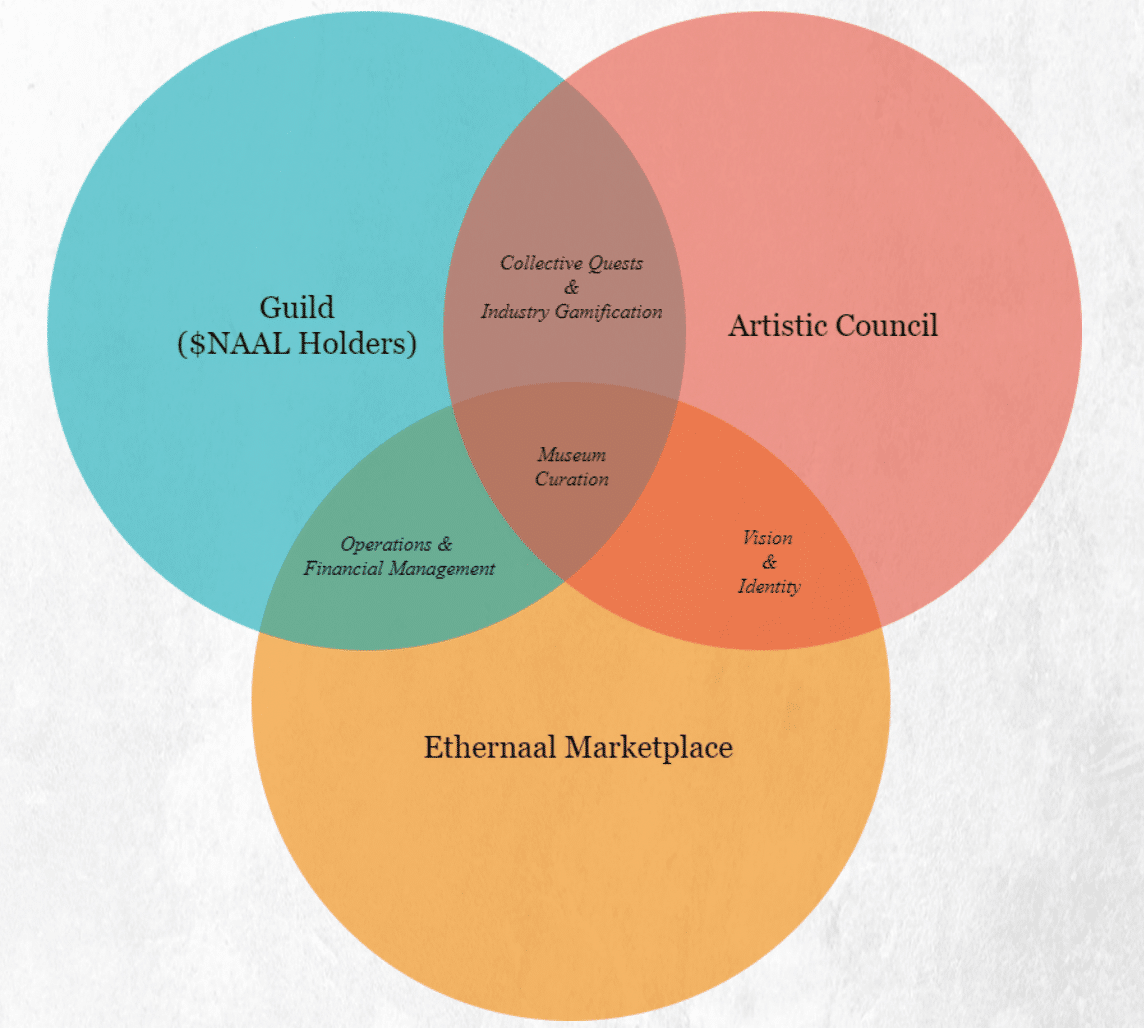By definition, a tattoo is a work of art destined to disappear along with the person who wears it. By discovering blockchain technologies, Ethernaal had the idea of offering artists to immortalize their works in the form of non-fungible tokens (NFT). An overview of the Ethernaal platform, how it works, its NAAL token and the problems it solves
Ethernaal, NFTs for the 10th art
Like many other sectors, the tattoo industry has been hit hard by the global health crisis. As soon as the first containment was announced, bookings stopped and artists found themselves unable to make a living from their art.
So the idea was born to allow artists to save their tattoos in a museum for eternity and eventually continue to generate income, even when their main activity is affected by a crisis.
This is how Ethernaal came into being, in March 2021, when two tattoo professionals met the world of blockchain. Unlike most projects that embark on blockchain, Ethernaal has a community of cryptocurrency novices.
And for good reason, the project aims to build a decentralised organisation of independent tattoo artists and offer them new artistic, creative and of course financial opportunities. At the moment, more than 70 artists have joined the project and as many are waiting.
Initially, Ethernaal aims to be educational, offering artists, designers and other professionals in the sector a gateway to the world of blockchain. They will be guided through the entire process of transforming their tattoos into non-fungible tokens (NFTs). Any part of their daily lives can be digitised, from a photograph of their salon to an instrument of their trade. Afterwards, artists will be able to display and sell their NFTs on a dedicated marketplace.
But that’s not all, Ethernaal wants to take advantage of the emergence of metaverses to create a real virtual museum of the 10th art. For the moment, two metaverses are under construction, including a museum on AltspaceVR, but new use cases should arrive during the first quarter of 2022.
Eventually, why not apply your tattoo NFT to your avatar in the blockchain game The Sandbox, for example?

Ethernaal’s metavers on AltspaceVR
At the time of writing, Ethernaal has successfully launched its NFT tattoo marketplace. A few renowned partners have already joined the venture, namely:
- STAKE DAO,
- SushiSwap Miso,
- Unicrypt,
- The Nemesis,
- Ternoa.
The NAAL, backbone of the Ethernaal ecosystem
A governance token
Ethernaal’s primary goal is to bring together tattoo artists from around the world in one organization. Its mission: to identify the best works, document the history of the art to create a cultural database, modify and improve the regulatory framework, establish intellectual property rights, etc.
Once again, the blockchain has emerged as the best vehicle to achieve this. The Ethernaal platform is based on the Ethereum blockchain (ETH) and is managed by NAAL holders.
NAAL is an ERC-20 token, available only on the SushiSwap exchange, with a total limit of 40 million tokens. With a current supply of 4 million tokens, NAAL has a market capitalisation of $700,000. For the time being, most of the tokens issued at the IDO are locked in a liquidity pool on Unicrypt.
It operates in the format of a decentralised autonomous organisation (DAO), meaning that the user interface, cash management, development strategy and choice of team members are all directly owned by NAAL owners.

Use and role of the NAAL token in the Ethernaal DAO (Source: Ethernaal whitepaper)
The Ethernaal DAO is composed of two entities: the council and the guild. The guild is the meeting of all NAAL holders who have deposited all or part of their tokens in the staking pool. They have the right to elect or dismiss a member of the council by vote. The board is made up of artists, ambassadors and major investors in the project.
In order to make its marketplace fully decentralised, operational and strategic decisions are made entirely by the DAO. NAAL’s holdeur will therefore be responsible for regulating the marketplace by identifying inappropriate content and copyright violations. In return, they will receive more NAAL tokens.
A utility token first
The NAAL token is the cornerstone of the Ethernaal ecosystem. More than just a currency for the marketplace, it was designed to be needed by all users, whether they are artists, investors or DAO members. Thus, the token is destined to be held, consumed and redeemed over and over again.
For tattoo artists, a minimum amount of NAAL will be required to submit their work to the Ethernaal platform. If the guild validates the request, then a small part of the tokens will be burned and will finance the management costs of the DAO. From there, artists can be supported to mint their own NFTs and put them on sale on the marketplace.
The token also gives access to exclusive events and services, partnership opportunities and even funding if the DAO agrees.
Ethernaal also offers a staking option for NAAL tokens. This will allow you to receive a share of the organisation’s profits. Of course, as mentioned in the previous paragraph, this will offer access to the guild, and even a seat on the board, depending on the quantity held.
Finally, it will make you eligible for airdrops and other exclusive bonuses during the development of Ethernaal.
How the Ethernaal platform works
Were you intrigued by the Ethernaal presentation and want to know how to use the platform? In the rest of this article, we will help you to see a little more clearly.
To begin, visit the Ethernaal website. On your first visit, you will need to identify yourself. To do this, click on the “Register” button at the top right of the screen. You will be redirected to a page asking for your email address and nickname.
Once you have entered your email address and nickname, click on the “Register As User” button. The site will automatically open your favourite digital wallet (if you don’t have one, don’t panic, find our tutorial explaining how to create a MetaMask wallet) and all you have to do is sign the transaction to link your Ethernaal account to your Ethereum address.
Please note that you do not have to register to use the Ethernaal platform, but you will need to do so to take advantage of their services. On the homepage, there are three interfaces: “Gallery”, “Artists” and “Portfolio”.

The Ethernaal platform and its different tabs
In the “Artists” and “Portfolio” tabs, you will find respectively all the artists using Ethernaal and their works. The “Gallery” section corresponds to the marketplace; this is where you will find all the NFTs of tattoos for sale.
On Ethernaal, the works are classified by specific categories. On the previous image, you can already see 3 of them: NF2T, flaNFT and eNFT. These stand for Non-Fungible Tatoo Token, Ethernaal-class NFT and Flash-Class NFT respectively. In reality, there are about thirty of them, whose characteristics are detailed in the Ethernaal whitepaper.
As you can see from the previous image, each NFT is listed with the name of the associated work, the pseudonym of its creator, the current holder and the selling price. If you like one of them, you can click on the “Buy” button to purchase it. The platform will automatically open your wallet and ask you to validate the transaction. Please note that you must have enough Ether to complete the purchase and avoid transaction fees.
That’s it, you have your first NFT of Ethernaal! Now you are free to simply keep the artwork or arrange a meeting with the artist to bring the tattoo to life
